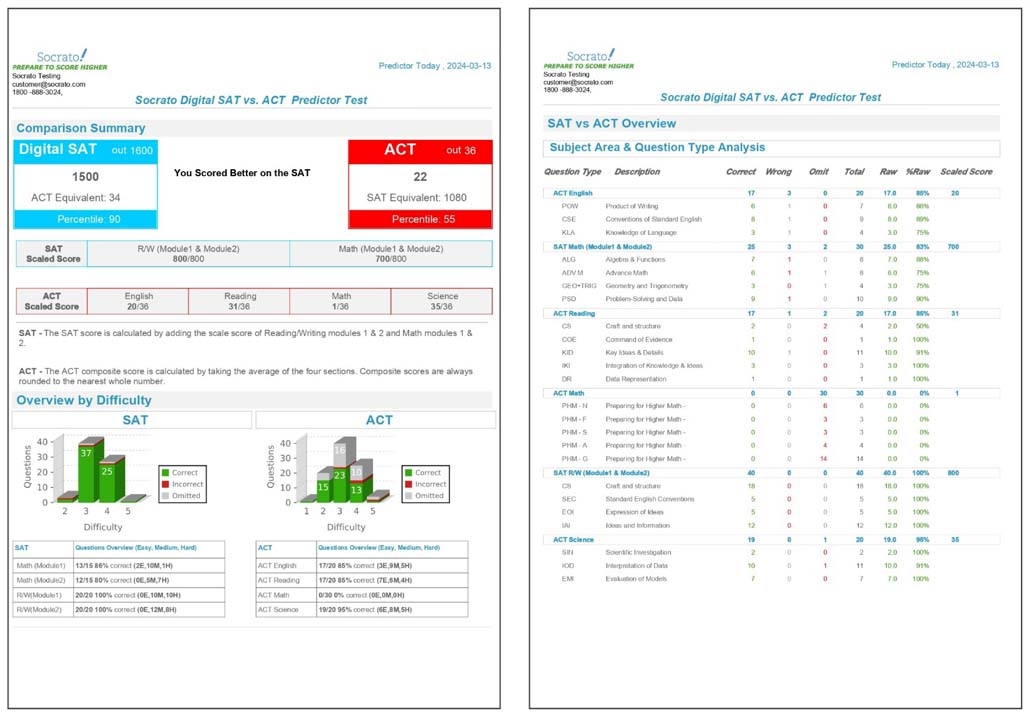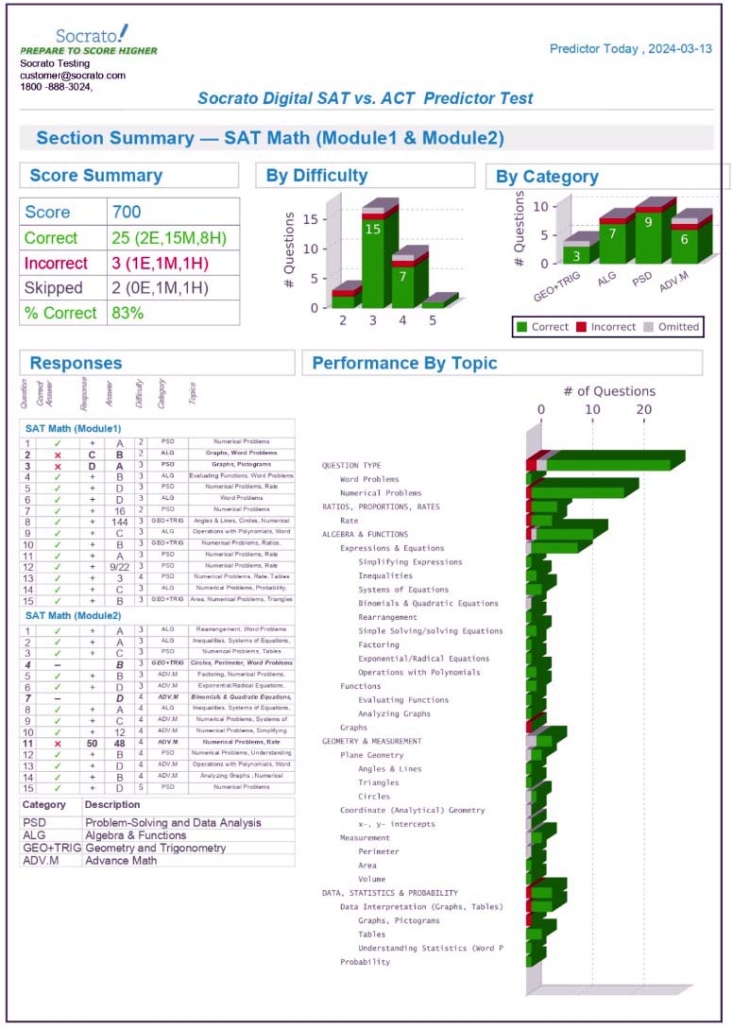Digital SAT vs ACT Predictor Overview
The Digital SAT vs ACT Predictor consists of eight sections, each of which accurately represents the types of passages, questions, difficulty level, and answers found in either a Digital SAT or ACT exam section. Each section is between 15 and 30 minutes long and contains the number of questions needed to simulate the pace required for each exam. There is a total of 160 questions. The table below displays a breakdown of all the sections appearing on this exam. Two five-minute breaks are suggested as well.
| Section | Topic | Calculator Permitted? | Number of Questions | Time (minutes) | Minutes per Question |
|---|---|---|---|---|---|
| TOTAL | 160 | 175 | |||
| 1 | English (ACT) | N/A | 20 | 15 | 0.75 |
| 2 | Math Module 1 (SAT) | Yes | 15 | 15 | 1.00 |
| 3 | Reading (ACT) | N/A | 20 | 20 | 1.00 |
| 4 | Math (ACT) | Yes | 30 | 30 | 1.00 |
| 5 | Reading/Writing Module 1 (SAT) | N/A | 20 | 30 | 1.5 |
| 6 | Science (ACT) | No | 20 | 20 | 1.00 |
| 7 | Reading/Writing Module 2 (SAT) | N/A | 20 | 30 | 1.5 |
| 8 | Math Module 2 (SAT) | Yes | 15 | 15 | 0.90 |
Digital SAT vs ACT Predictor Report
After you take either the paper/pencil or online exam, Socrato will generate detailed reports that highlight your performance on each test section and display your relative performance on the Digital SAT vs. ACT as a whole. You should discuss these results with your instructor, along with other information, to decide which test is better suited for you.
The report
- will help identify which types of questions are best suited to your test-taking abilities and learning styles.
- Contains an eight-page detailed analysis of each section along with an overall “big picture” analysis.
- Exam recommendation as per your test performance and scores.
- Is available immediately.

Additional Test Analysis
- Predicts the whole exam and individual section scores, percentiles, and students’ strengths and weaknesses.
- It provides a detailed question of difficulty analysis for each section.
- Provides answer distribution analysis for each section.
- It provides a topic analysis for each section.
- Diagnostic reports are immediately available.

